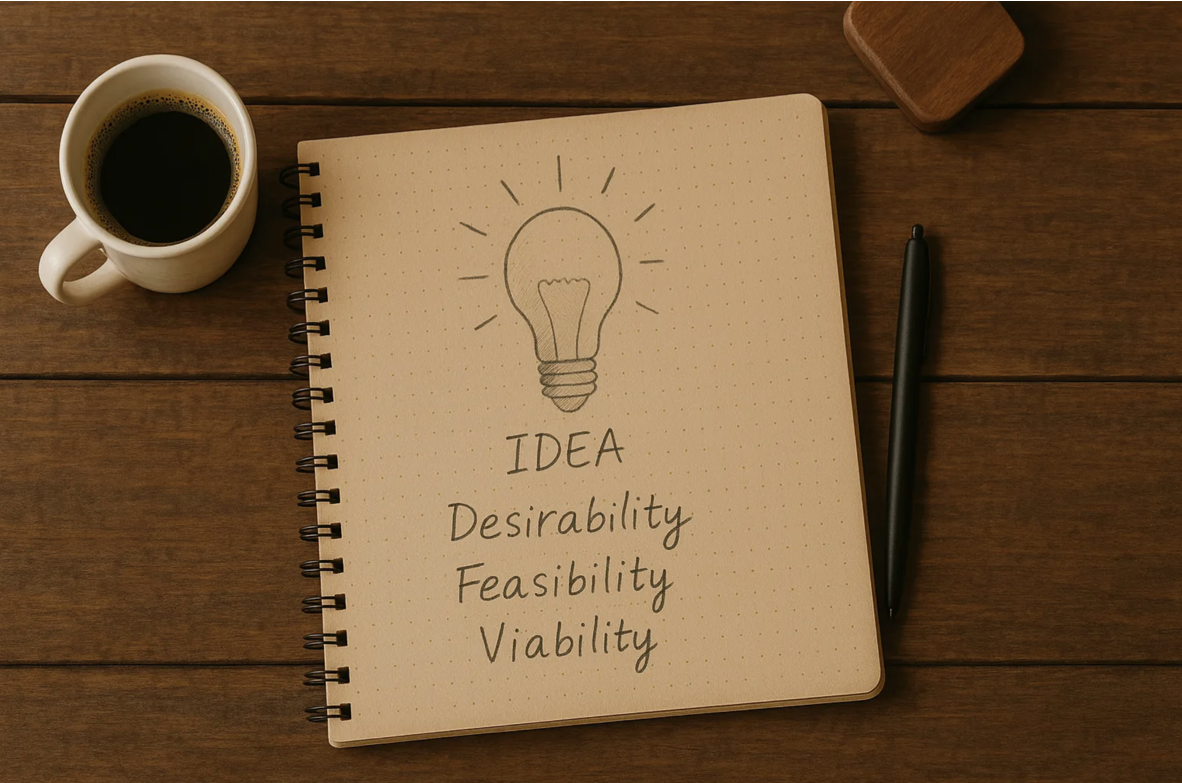Great ideas die every day.
Not because they lack potential, but because founders fail to understand the critical balance between desirability, feasibility, and viability. These three pillars are the foundation of any successful business venture, separating breakthrough innovations from forgotten concepts.
The Startup Graveyard: Where Good Ideas Go to Die
Imagine pouring your heart, soul, and savings into a business only to watch it crumble. It happens more often than you’d think. Founders fall in love with an idea, invest months of work, and then discover nobody actually wants their solution. Or worse, they create something people might want, but can’t afford to produce or sustain.
The harsh reality is that most startups don’t fail from a lack of passion — they fail from a lack of strategic understanding.
Desirability: Do People ACTUALLY Want This?
Desirability is about human connection. It’s the fundamental question every entrepreneur must answer: Will people care enough about my solution to pay for it?
Too many founders skip this critical step. They build elaborate products based on assumptions, imagining markets that don’t exist. The most dangerous phrase in entrepreneurship? “I think people will love this.”
Instead, desirability demands rigorous validation:
-
Zero in on a genuine, acute pain point that keeps your target users up at night
-
Talk to potential users
-
Understand their deep, unmet needs
-
Create prototypes that solve real problems
-
Listen more than you speak
Your idea isn’t about what you want to build. It’s about what your users desperately need but can’t find elsewhere.
Finding a true pain point means identifying a problem so significant that users are actively seeking a solution. It’s not just an inconvenience — it’s a problem that causes frustration, wastes time, costs money, or creates emotional distress. The more specific and acute the pain, the more likely your solution will find eager customers.
Feasibility: Can We Build This?
Feasibility transforms your vision from a dream into a potential reality. It’s the technical and operational roadmap that determines whether your idea can exist beyond a PowerPoint presentation.
Feasibility asks critical questions:
-
As a team, do we have the technical skills and industry knowledge to create this?
-
Is the solution feasible with today’s technology?
-
What resources will we need?
-
Are there significant technical barriers?
This isn’t about perfection. It’s about understanding the realistic path from concept to creation. Sometimes, feasibility means finding creative workarounds or pivoting your approach to match your capabilities.
For technical founders, this is where excitement lives. For non-technical founders, this is where strategic partnerships and technical co-founders become essential.
Viability: Can This Become a Sustainable Business?
Viability is the financial heartbeat of your startup. It’s where passion meets economics, determining whether your idea can generate enough revenue to survive and grow.
Many passionate entrepreneurs skip this pillar, believing that a great product will automatically create a great business. Nothing could be further from the truth.
Viability requires you to answer tough questions:
-
What’s our revenue model?
-
Who will pay, and how much?
-
What are our costs?
-
How long until we become profitable?
-
Can we scale this business?
A viable business isn’t just about making money — it’s about creating a sustainable engine that can grow, adapt, and provide long-term value.
The Dangerous Myth of “Build It and They Will Come”
Here’s a hard truth: your first idea is rarely your best idea. The most successful entrepreneurs are those who can validate, iterate, and pivot.
Desirability, feasibility, and viability aren’t checkboxes. They’re an interconnected ecosystem that requires constant refinement. Your initial concept will change. Your understanding will deepen. Your approach will evolve.
Your Startup Survival Guide
-
Start with Empathy: Deep user research and understand the root cause of the problem.
-
Then Validate: Make sure your assumptions are valid in real life and not just what you think.
-
Ideate a solution: Based on what you validated, what would be a solution that users will like?
-
Build lightweight Prototypes: Demonstrate your solution in a way that users can have a feel for it.
-
Test relentlessly: Bring that prototype to their hands and let them interact with it and give you feedback.
-
Be willing to pivot: absorb the negative feedback before the positive and adapt to it.
-
Keep updating your prototype until you get all positive feedback.
Always validate before investing significant resources.
Remember: The goal isn’t to build a perfect product. The goal is to solve a real problem in a way that creates sustainable value.
The Three Pillars in Action
Think of desirability, feasibility, and viability like a three-legged stool. Remove any leg, and the entire structure collapses.
-
Desirable but not feasible? A beautiful dream that never launches.
-
Feasible but not desirable? A solution searching for a problem.
-
Desirable and feasible but not viable? A passion project that bleeds money.
Only when all three pillars align do you create something truly transformative.
Your Next Step
Stop dreaming. Start validating. Not building.
Talk to potential users. Sketch your first prototype. Run the numbers. Challenge your assumptions. Build smarter, not faster.
Your breakthrough isn’t waiting to be discovered, it’s waiting to be methodically created.

